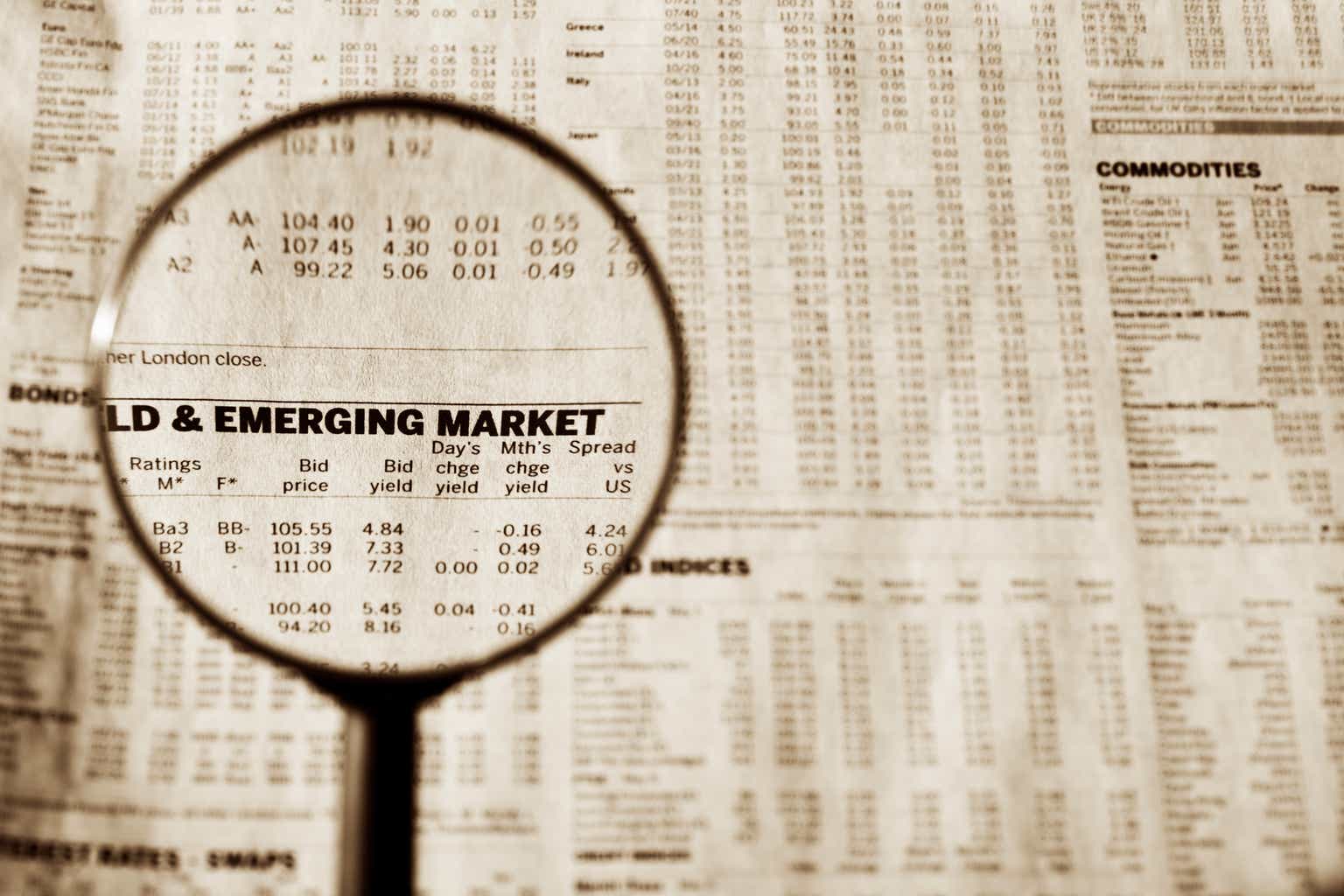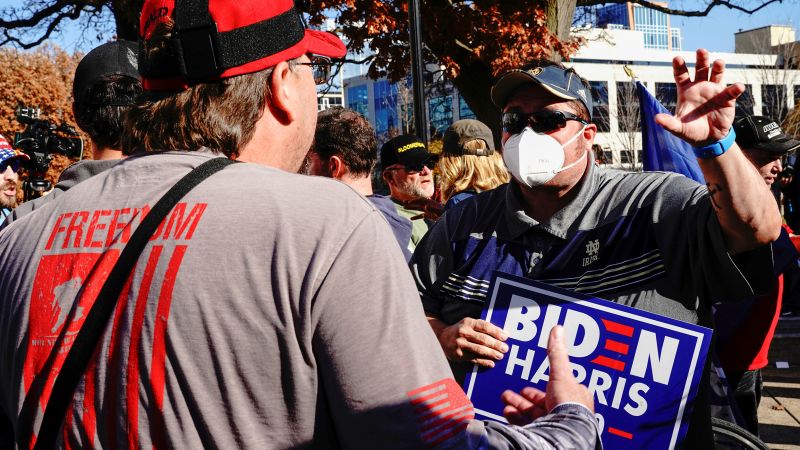Emerging Markets Equities Update and Outlook Q3 2023
David Semple: Hello and welcome to the Q3 recap for emerging market strategies at VanEck.
I’m David Semple, I’m the portfolio manager of the strategy and joining me today is Ola El-Shawarby who’s the deputy portfolio manager of the strategy.
The aim is to give a succinct recap of what worked, what didn’t, what the outlook is, and some of the portfolio positioning and where we’re focusing our efforts going forward in our search for structurally growing candidates in the emerging markets equity universe.
Q3, it was a decent quarter. We were broadly in line, actually slightly ahead, and that continued the outperformance over the last year plus. And generally it was a stable quarter, I would say, for emerging markets. Now, obviously, we ran into October, which was less good for all risk assets. So that was difficult. But talking about the third quarter in particular, just looking at what worked and what didn’t, I’m going to actually start with what didn’t work and then hand it over to Ola, who gets the more pleasurable task of talking about what did work.
Some of the areas where it was more of a struggle for the portfolio, where things didn’t perform quite as we had anticipated, one would be in stock selection in India. And principally that came down to effectively two financials. One is HDFC Bank. It’s a long-term shareholding for us. It is absolutely a top-quality company. They’ve been undergoing a merger with their sister company. And for now, I believe that they have more liquidity than one might have wished for in this environment. But asset growth is picking up and we think they’ll be back on track. This is a solid, steady compounder over time. And we’re very happy to have it in our portfolio. We’ve known the company for decades and we don’t really want to major one quarter.
We also had Jio Financial Services, which was spun out of Reliance. It has, as its assets, a lot of Reliance shares right now, but the market wanted to take profit in that after that spin out, simply because they don’t have as much visibility as they would like in terms of growing its business, perhaps. Materials, particularly the solar chain and those related to the solar chain had a weak quarter. So we did have some exposure there through some Chinese companies and through LG Chem in Korea. That was weak.
And finally, for me, Vamos in Brazil, which is a truck leasing company, has a more challenging quarter, and that was partly related to the provision of government subsidies. So the dealership business was weaker than expected. So Vamos underperformed in that quarter.
Turning to some of the positive contributors, I’m going to pass it over to Ola.
Ola El-Shawarby: Thanks, David. I think this quarter some of the names that showed up as top contributors were still names that we like and have owned for a while. That would include a bank like Bank of Georgia, which is basically one of two dominant banks in Georgia, the country, which is effectively a duopoly banking system. And they continue to compound earnings and grow their balance sheets quite consistently and also remain very profitable with ROEs well above 25%. So we continue to be very happy with that name.
Also our name in Kazakhstan, Kaspi, which is effectively the super app for Kazakhstan that’s doing electronic payments, consumer finance, as well as e-commerce has been a great performer again. It continues to beat expectations and raise guidance.
And these two are names that we like for very stock specific reasons in countries that are not indexed countries. So it speaks to the stock selection capabilities of the strategy and really the focus on structural growth.
We’ve also seen our names in Turkey do very well this year and in the quarter. And that’s largely because now we’re seeing more and more evidence since the elections in May that the country is turning back to more orthodox macro policies and addressing some of the issues that have been concerning in the past, like gradually addressing inflation and adjusting interest rates in the right direction. And then we also had a name in China, Miniso, which is kind of a variety retailer, somewhat close to a dollar store, but not quite, do really well during the quarter. They are sort of a treasure hunt type store that people go into, and it’s very cheap in terms of ticket prices. So it satisfies this itch to buy something that you probably don’t need, but enjoy buying. And they’ve done really well domestically, despite the difficult environment in China, because there are beneficiaries of the trading down impact. And also they’ve been successful in expanding internationally as well. So again, one name that’s doing well, even in a weaker consumer environment. So we’ve been happy with our names and continue to like those names and have high conviction there.
David Semple: Thanks, Ola.
Looking at the outlook for emerging markets, I mentioned that, you know, post quarter-end October has been a difficult month for risk assets. Now, there’s an obvious proximate, two proximate reasons for that. One is there was a conflict in the Middle East. I won’t comment on that because it’s such a tricky and difficult situation.
But the other one has been the rise in interest rates in the U.S. Now, that does impact emerging markets. The more rates rise, that has an impact on valuation, it impacts on liquidity and so forth and the dollar as well. We have seen, however, towards the end of the month, some better indications in terms of bad news is good news. So weaker jobs numbers and so forth, which may lead us to a better environment for risk assets and a better environment for risk assets includes a weaker dollar. So we can anticipate that might happen.
As far as the major emerging markets, countries are concerned. China remains a country that takes up most of the commentary, the mind space for a lot of people in emerging markets. It’s still very significantly the most underweighted major country, in emerging markets universe amongst active investors, which obviously is a risk. The economic recovery or the economic situation in China did take a little bit of a dip in October. The activity indicators were a little weaker than expected, but that doesn’t, really change our mindset about China being at a sort of fairly bumpy bottom in terms of its economic growth. We do see incremental government stimulus that’s impacting some stocks specifically. The problem however is that we don’t really get the animal spirit, the confidence that we need for a real recovery in Chinese equities right now. But I think we’re closer to it.
One thing that we have done in the portfolio over the last few months is to tilt it a little bit back towards some of the internet type of names. They’re very cheap. They’re absolutely consumer facing and they’ve been seeing earnings revision momentum upwards. And in that, I think the most interesting thing for us is the winners are really becoming the winners and it’s happening in a lot of other places, but the companies that are the strongest become stronger and they’re increasing their margins, lowering the costs and increasingly doing more buybacks and capital-friendly moves with their balance sheets. So that’s China. So we remain net-net slightly underweight, but it’s something we’re watching very closely.
Ola’s been traveling around recently, so there’s a couple of places that she wanted to mention.
Ola El-Shawarby: I visited India during the quarter, obviously a very interesting place and a very interesting time to be there. We absolutely love the structural top-down story because you have a very powerful combination of favorable demographics, digitization efforts that have resulted in financial inclusion and that’s reflecting positively on the broader macro environment. You’ve also had the government that has done all the right policy reforms to support the growth. And the consumer as well as the business confidence is fairly high. So we are quite optimistic about the outlook in India and think over time this is a place that will continue to offer, structural growth opportunities that we look for. The only challenge there as you probably heard us say before is that valuations particularly for the very clear beneficiary names like in the consumer space are priced at a very, very high valuation. So that makes it a bit more tricky to go more overweight in India as we would ideally like at the moment. But we are on the lookout for more interesting names that maybe offer a better risk reward opportunity and we’re happy with the names that we have as well. And also I’ll say that next year in May there are elections, so maybe between now and then we might see some noise that offer better entry points. So it’s a country of focus for us, but we have to be somewhat mindful of valuations.
And then the other country that I visited earlier in the year was Brazil. And Brazil, in my opinion, and the team’s opinion, remains one of the better risk reward opportunities because you have a combination of rates now coming down from what is a very high level of real yields and inflation is trending down. So that leaves the central bank the opportunity to decrease rates and we’ve already seen that kickstart in September with three rate cuts of 50 basis points each so far. And on the flip side, valuations are still very, very attractive and very cheap. And the bottom up stories are great. So that’s a place that we like and it’s probably our highest overweight in the portfolio at the moment.
And then in terms of other places where we’re focusing research effort. Saudi Arabia is one place because we are very excited about some of the structural reforms that have been happening, both in terms of social reforms and opening up of the economy and also some of the macro tailwinds that the country is seeing. But again, valuation there is a little punchy, so we’re doing work on many names that we think offer longer-term compounding opportunities, but we would like to find the right entry moment.
And of course, unfortunately with some of the difficult environment in the Middle East, we might be getting that opportunity in the near future. And then I’m actually heading off to Mexico with Patricia, so that’s another country that we’re also doing more work on because we think that the near-shoring theme is real. It’s probably going to play out on the long term not necessarily something that’s like an overnight impact, but we think it’s real and we see a lot of interesting movement there and some increased business confidence. So again, some political noise in Mexico as well, but that very well could offer good entry points who are doing more work on several names there that stand to benefit over time.
David Semple: Thank you, Ola. So that gives you a little bit of insight into how the quarter went, where we’re seeing opportunities, and where we’re working, and where the portfolio is positioned. We do look forward with enthusiasm to the asset class. I think we’re at an interesting juncture in terms of the change in regime in terms of rates and inflation.
There are obviously some challenges ahead. I think China will look a little bit better in the coming quarter, activity will be better. Geopolitics, who knows? As I said, leave the Middle East aside, but at least Xi is going to be meeting Biden this month. And hopefully that’ll calm down a little bit, although going into the election year next year in the U.S., it’s likely to perhaps have some flare ups here and there.
But we see a lot of opportunity. We see a lot of excitement in the asset class. And so, we’re working relentlessly to uncover those opportunities that are real structural growth in emerging markets.
So with that, it just remains for me to say, thank you for listening in and we’ll speak next time.
IMPORTANT DISCLOSURE
Please note that VanEck may offer investment products that invest in the asset class(es) or industries included in this video.
This is not an offer to buy or sell, or a recommendation to buy or sell any of the securities, financial instruments or digital assets mentioned herein. The information presented does not involve the rendering of personalized investment, financial, legal, tax advice, or any call to action. Certain statements contained herein may constitute projections, forecasts and other forward-looking statements, which do not reflect actual results, are for illustrative purposes only, are valid as of the date of this communication, and are subject to change without notice. Actual future performance of any assets or industries mentioned are unknown. Information provided by third party sources are believed to be reliable and have not been independently verified for accuracy or completeness and cannot be guaranteed. VanEck does not guarantee the accuracy of third party data. The information herein represents the opinion of the author(s), but not necessarily those of VanEck or its other employees.
Emerging Market securities are subject to greater risks than U.S. domestic investments. These additional risks may include exchange rate fluctuations and exchange controls; less publicly available information; more volatile or less liquid securities markets; and the possibility of arbitrary action by foreign governments, or political, economic or social instability.
All investing is subject to risk, including the possible loss of the money you invest. As with any investment strategy, there is no guarantee that investment objectives will be met and investors may lose money. Diversification does not ensure a profit or protect against a loss in a declining market. Past performance is no guarantee of future performance.
No part of this material may be reproduced in any form, or referred to in any other publication, without express written permission of Van Eck Associates Corporation.
© Van Eck Associates Corporation.
666 Third Avenue, New York, NY 10017
Original Post
Editor’s Note: The summary bullets for this article were chosen by Seeking Alpha editors.
Read the full article here







